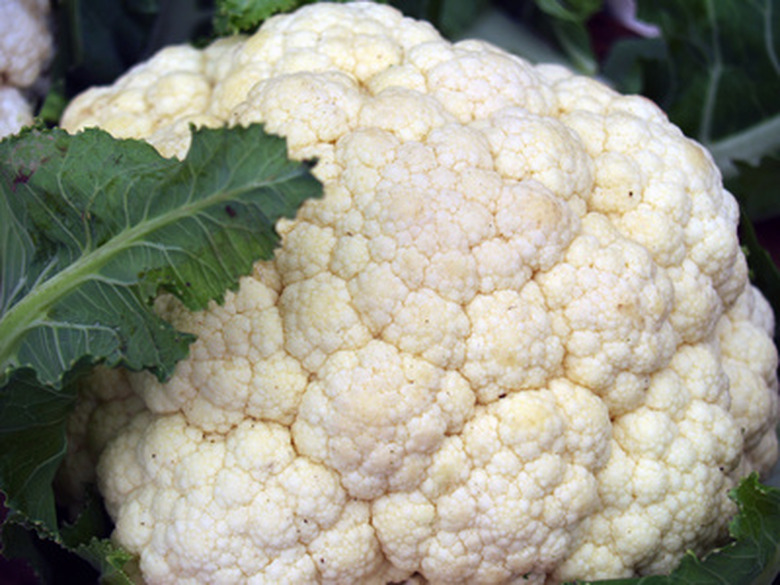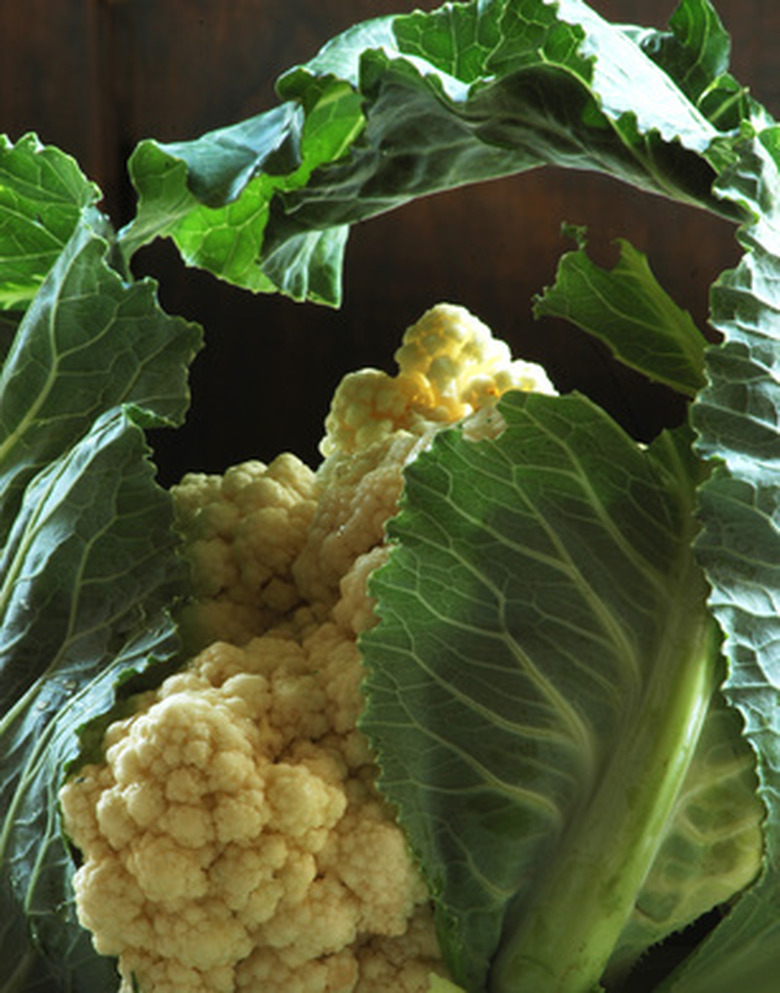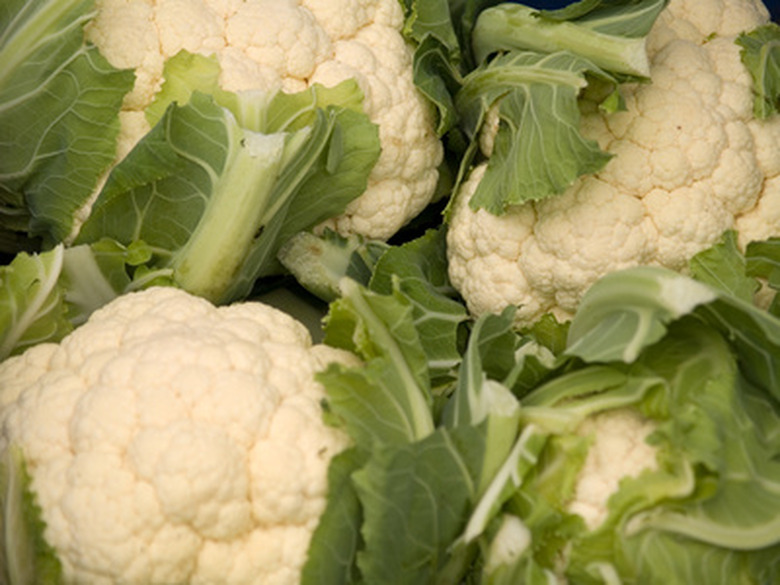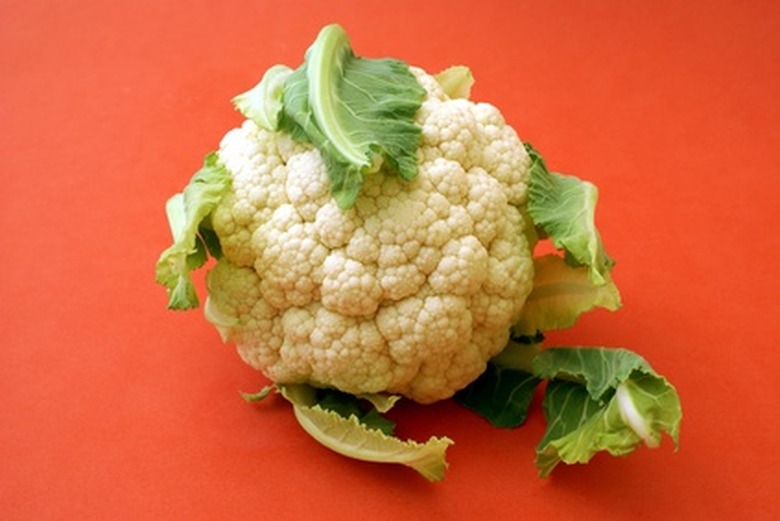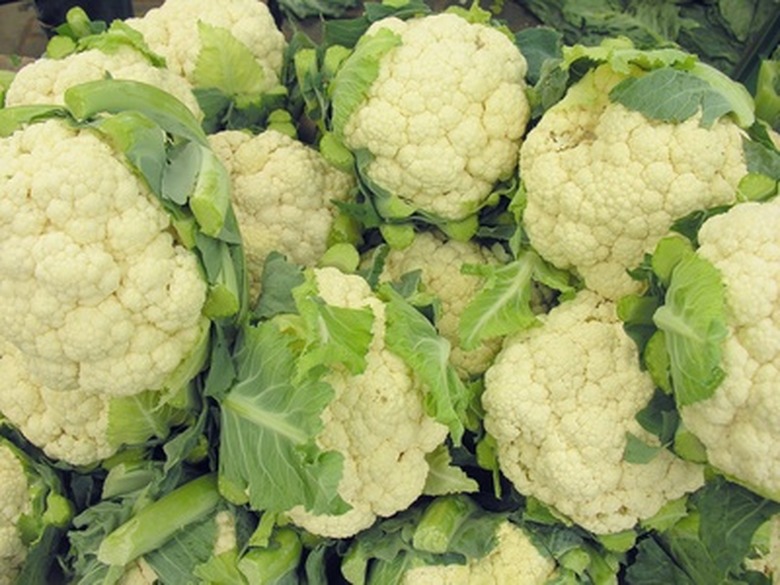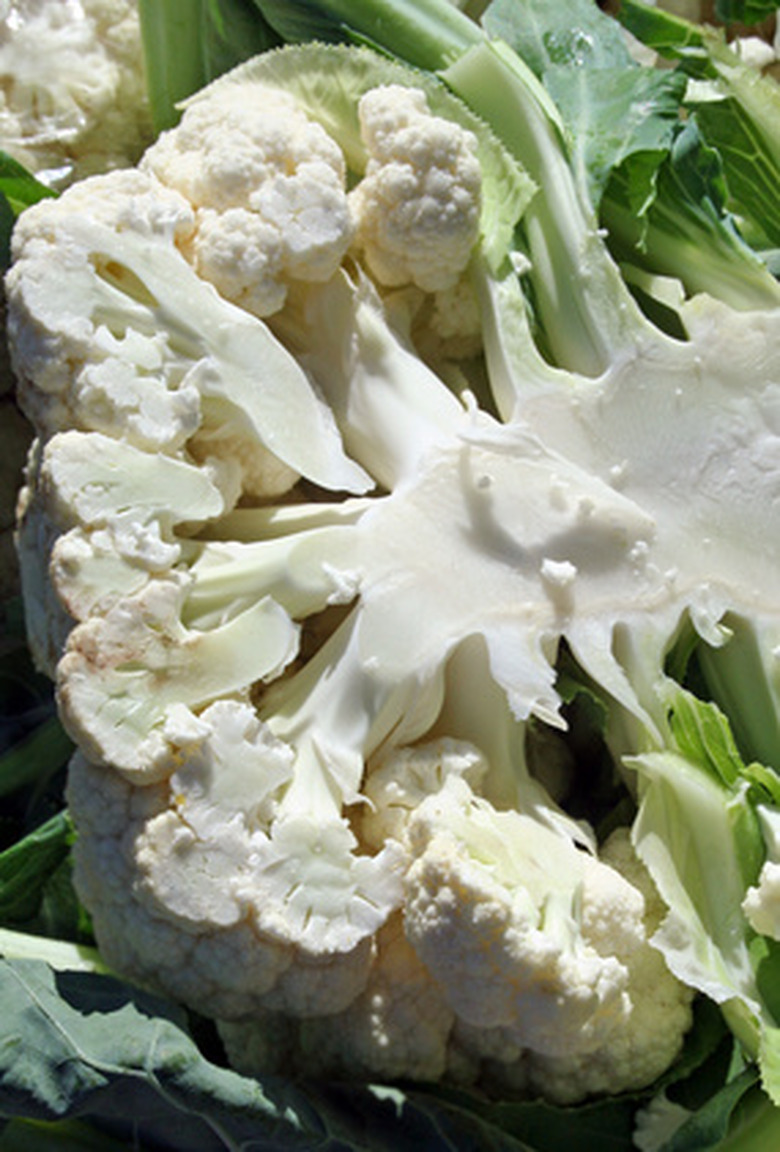Cauliflower Life Cycle
Cauliflower is called a cool-season vegetable. It grows best if the daytime temperature is between 60 degrees Fahrenheit to 80 degrees Fahrenheit. It can be widely grown in most areas by gardeners if it is planted early enough to mature in early summer or late fall when the temperatures hover at their coolest. The plant is grown commercially at high altitudes because this extends the growing season due to the cool weather.
Transplants verses Seeds
The cauliflower will grow best if planted as a transplant instead of a seed. Plants should be at least six weeks old when planted in a garden setting. according to the West Virginia University Extension Service. Start the seeds indoors at least six weeks before planting outside.
- Cauliflower is called a cool-season vegetable.
- The cauliflower will grow best if planted as a transplant instead of a seed.
Planting
Cauliflower prefers soil that is rich in organic matter. The pH should be around 6.5 for the plants to thrive. Before planting, a fertilizer should be added to the soil. A 5-10-10 plant fertilizer is ideal. Apply 5 pounds of fertilizer for every 100 square feet of garden space where the cauliflowers will grow. Fertilizer should be applied at least a week before planting the cauliflower transplants. Minor elements, such as boron and magnesium, help the cauliflower grow. These elements can be purchased at garden-supply stores and applied with the fertilizer. Follow the directions on the label for application instructions.
- Cauliflower prefers soil that is rich in organic matter.
- Before planting, a fertilizer should be added to the soil.
Spacing
Plant cauliflower plants at least 18 inches apart. Fertilize the cauliflower transplants at the time of planting with 5-10-10 fertilizer to 12 quarts of water to help reduce shock and prevent wilt. Allow the solution to set for a few hours before applying around the base of the cauliflower transplants. Maintain a moist soil environment for optimum growth. Mulch can be applied around the cauliflower plants at a depth of 2 to 3 inches. Use peat moss, sawdust or bark chips.
Nitrogen
The cauliflower plant requires large amounts of nitrogen to grow and flourish. Apply one tablespoon of nitrogen per plant three weeks after planting. Do not allow the nitrogen to touch the plant. Sprinkle around the base of the plant and water thoroughly. Reapply in two weeks and then wait an additional two weeks before the last application.
- Plant cauliflower plants at least 18 inches apart.
- Sprinkle around the base of the plant and water thoroughly.
Tying
It is imperative that the cauliflower remain white and visually appealing. To achieve this, the heads of the cauliflower must be tied using the plants leaves. Tie the heads shut before sunlight reaches them. They should be about the size of a small fist or doorknob when tying occurs. Tying also helps keep the cauliflower tender and sweet. Wooden clothespins can be used to hold the leaves shut over the cauliflower's head. Soft cotton cloth can also be used to secure the leaves. Harvest usually can take place a week after the cauliflower head is tied off.
- It is imperative that the cauliflower remain white and visually appealing.
- Wooden clothespins can be used to hold the leaves shut over the cauliflower's head.
